|
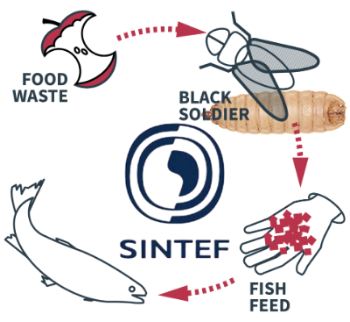
Photo: Sintef/FIS
Turning Fish Waste into Feed: Scientists Investigate Safety of Novel Circular Aquaculture Resource
 NORWAY
NORWAY
Friday, April 18, 2025, 07:00 (GMT + 9)
Research explores using bristle worms and soldier fly larvae grown on aquaculture sludge as protein-rich feed, identifying key contaminants requiring monitoring.
Scientists are exploring an innovative circular approach to aquaculture feed production by utilizing bristle worms and soldier fly larvae, which can thrive on aquaculture sludge, transforming it into a protein and omega-3 rich resource for fish and livestock. However, concerns about the potential transfer of toxic substances within this cycle necessitate thorough investigation. Researchers are now gaining critical insights into the specific substances that require careful monitoring to ensure the biosafety of this process.
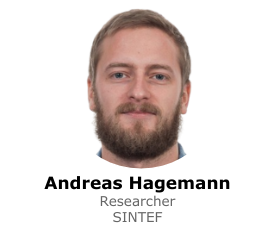 “Bristle worms and soldier fly larvae have demonstrated significant potential as sustainable sources of proteins and omega-3 fatty acids for feed production,” explains SINTEF researcher Andreas Hagemann. “However, if they are to be reared on fish sludge, a comprehensive assessment of the process's biosafety is absolutely crucial.” “Bristle worms and soldier fly larvae have demonstrated significant potential as sustainable sources of proteins and omega-3 fatty acids for feed production,” explains SINTEF researcher Andreas Hagemann. “However, if they are to be reared on fish sludge, a comprehensive assessment of the process's biosafety is absolutely crucial.”
A primary concern associated with using fish sludge as a feed substrate for these organisms is the potential presence of undesirable substances, including heavy metals and environmental toxins, which the worms and larvae could absorb and subsequently transfer into the food chain.
To evaluate this risk, a collaborative research team from SINTEF and the Norwegian Institute of Marine Research conducted a study to determine the extent to which such substances can enter the food chain. This research was part of the SecureFeed project, a collaboration involving SINTEF, the Norwegian Veterinary Institute, and the Norwegian Institute of Marine Research.
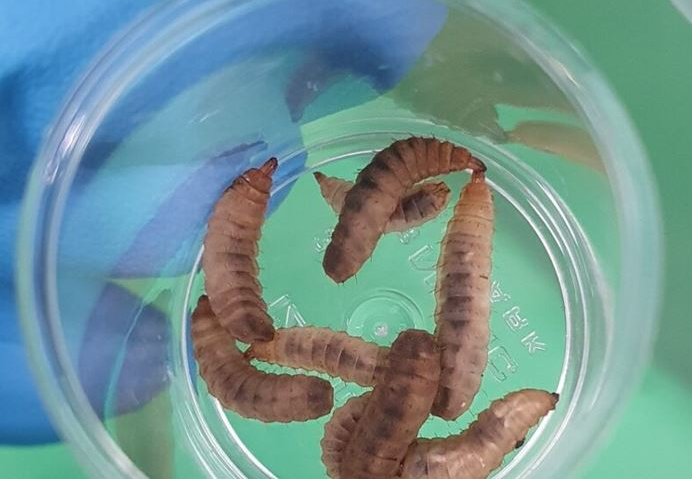
Source: SINTEF
The SecureFeed project also investigated the potential for transmitting prion diseases and whether bristle worms and soldier fly larvae could act as vectors for bacteria and viruses present in salmon sludge.
Thorough Analyses Reveal Potential Challenges
The Norwegian Institute of Marine Research spearheaded the analysis of heavy metals and other undesirable substances, examining approximately 50 fish sludge samples collected from various aquaculture facilities along the Norwegian coast.
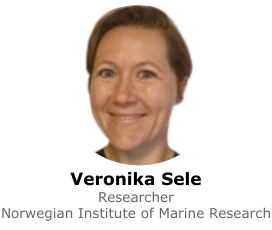 “Ensuring the safety of utilizing sludge in a potential food production chain is of paramount importance,” emphasizes Veronika Sele, a researcher at the Norwegian Institute of Marine Research. “Ensuring the safety of utilizing sludge in a potential food production chain is of paramount importance,” emphasizes Veronika Sele, a researcher at the Norwegian Institute of Marine Research.
The researchers conducted extensive analyses, focusing on heavy metals and persistent organic pollutants such as PCBs and dioxins.
“These substances are subject to strict regulations, with established upper limit values for their permissible content in both animal feed and its ingredients,” Sele clarifies.
Legacy Pollutants: Dioxins and PCBs
Dioxins and PCBs, groups of persistent organic pollutants that degrade slowly and can bioaccumulate within the food chain, were a key focus. While the production of PCBs has been banned for a considerable time due to their harmful effects on animals and humans, these substances remain present in the environment, often associated with marine and fatty feed components like fish oil.

Graphic summary of the review article in SecureFeed. The project aimed to gain knowledge about, and document the extent of, challenges around biosecurity when using particulate sludge from salmon farming to produce feed raw materials. The main deliverable from the project was a review article that would document the state-of-the-art for such a hypothetical value chain. This included looking at what fish sludge consists of in terms of nutritional value, microbial and chemical hazards, treatment methods and practices for sludge today, and its implications for further use, regulations, and the fate of microbial and chemical hazards in the sludge, via ingestion by invertebrates, to finished feed raw materials. Figure taken from Pettersen et al. (submitted). Click on the image to enlarge it
The researchers compared the levels of these pollutants in the fish sludge samples with those typically found in conventional fish feed. “We observed that the levels in both sludge and feed were generally comparable, although some sludge samples exhibited levels approaching the regulatory limits,” notes Sele.
Heavy Metals Pose a Significant Challenge
Analysis of heavy metals, particularly cadmium and arsenic, revealed that several sludge samples contained concentrations exceeding the established limit values for animal feed. Additionally, other metals, including copper, iron, zinc, and aluminum, were detected, with their levels varying significantly across the different sludge samples.

Source: SINTEF
Sele highlights the limited existing knowledge regarding the levels of organic pollutants in sludge and their potential for transfer to insects, indicating that research in this area is still in its early stages. “We did find elevated levels of certain undesirable substances in some of the analyzed samples, which warrants further in-depth investigation,” she states, advocating for the continuous monitoring of fish sludge for these metals to build a comprehensive database and gain better control over potential transmission pathways within this novel value chain.
Uptake by Organisms Requires Further Study
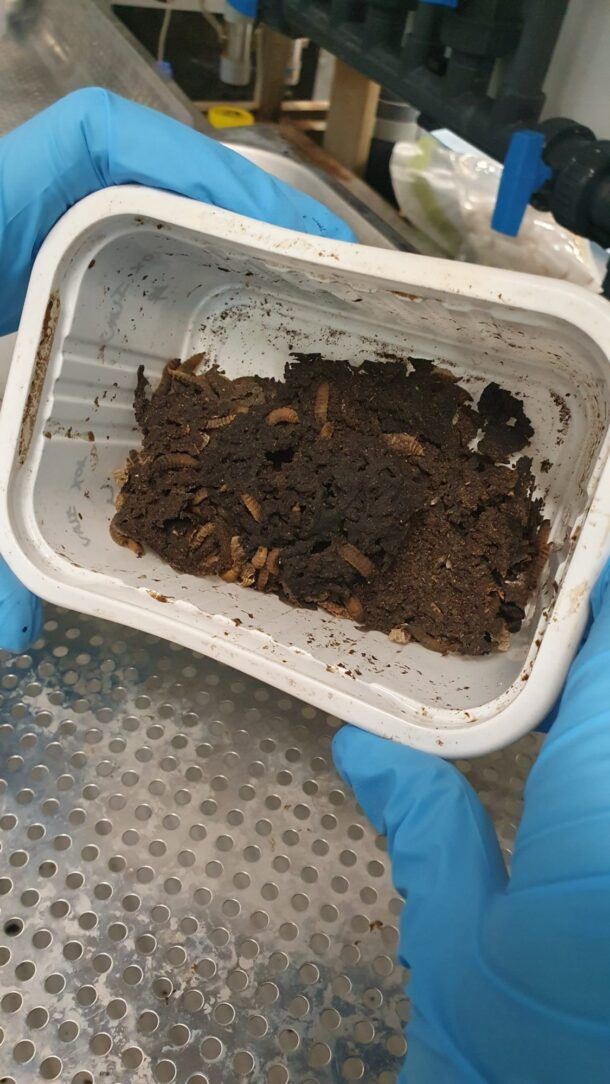 A critical question remains regarding the extent to which bristle worms and soldier fly larvae accumulate heavy metals and organic pollutants when consuming fish sludge. A critical question remains regarding the extent to which bristle worms and soldier fly larvae accumulate heavy metals and organic pollutants when consuming fish sludge.
Source: SINTEF -->
“Our observations indicate that some metals, PCBs, and dioxins can indeed accumulate in soldier fly larvae, with levels reaching or even exceeding the regulatory limits for feed ingredients,” Sele cautions. “Our understanding of organic pollutant transfer from sludge to insects is still limited, and further research is needed on several organic pollutants that we haven't yet examined. Similarly, we lack extensive data on the transfer potential from sludge to bristle worms, and future research will focus on assessing the transfer of specific organic pollutants to these organisms.”
Addressing the Regulatory Gap
This research provides crucial new insights into the composition of aquaculture sludge, encompassing both its nutritional value and potential risks associated with its reuse.
“Our primary goal has been to determine the safety of utilizing sludge in a biocircular feed production system involving bristle worms and insects,” concludes Hagemann. “Achieving this requires comprehensive analyses across various aquaculture facilities and over extended periods. While our findings suggest that most facilities can produce good-quality sludge suitable for low-trophic animals, we have identified some outliers. It is now essential for regulatory authorities to adapt existing regulations to facilitate the safe implementation of this promising circular solution.”
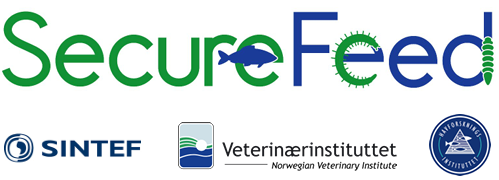
[email protected]
www.seafood.media
|



